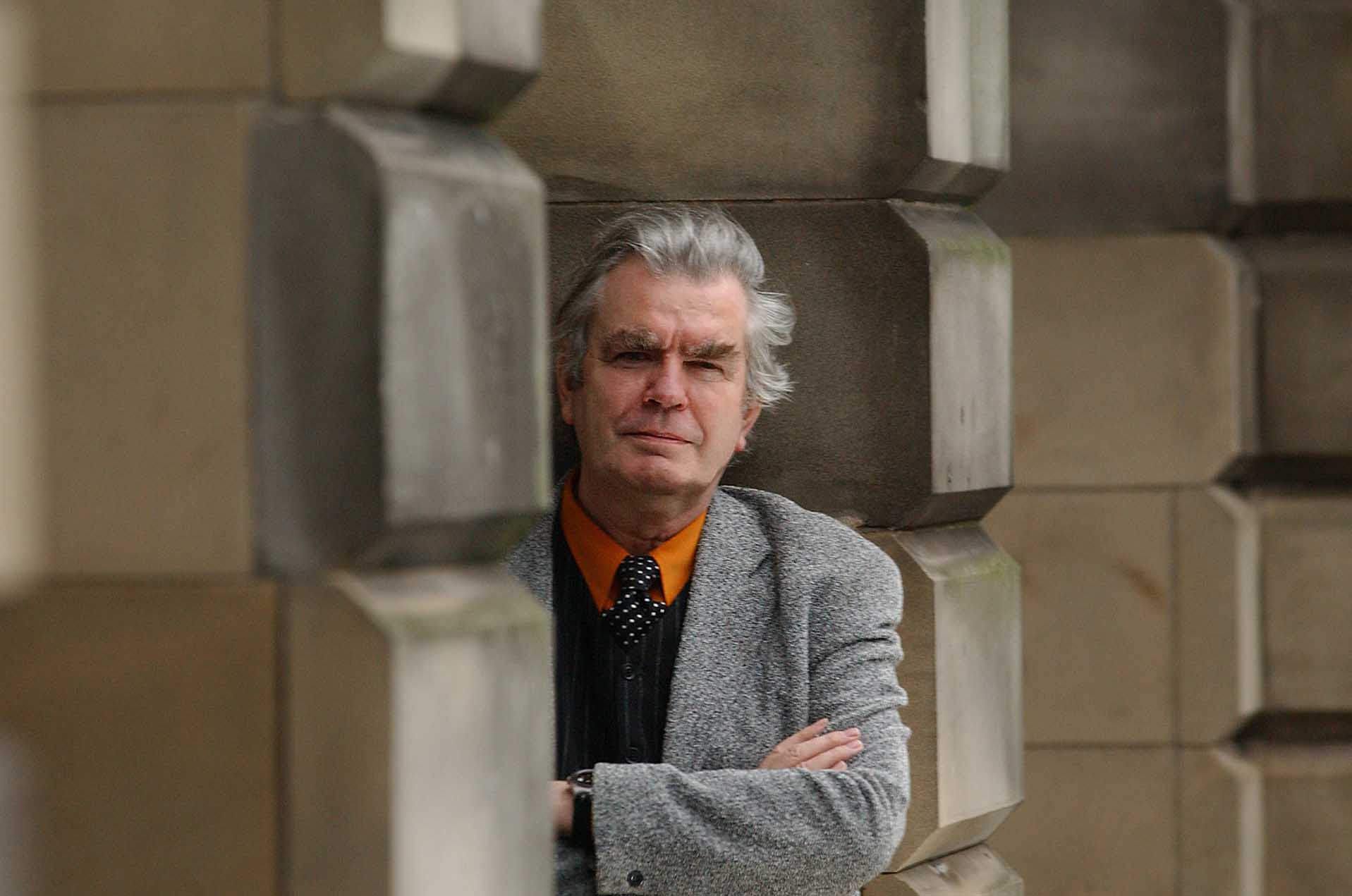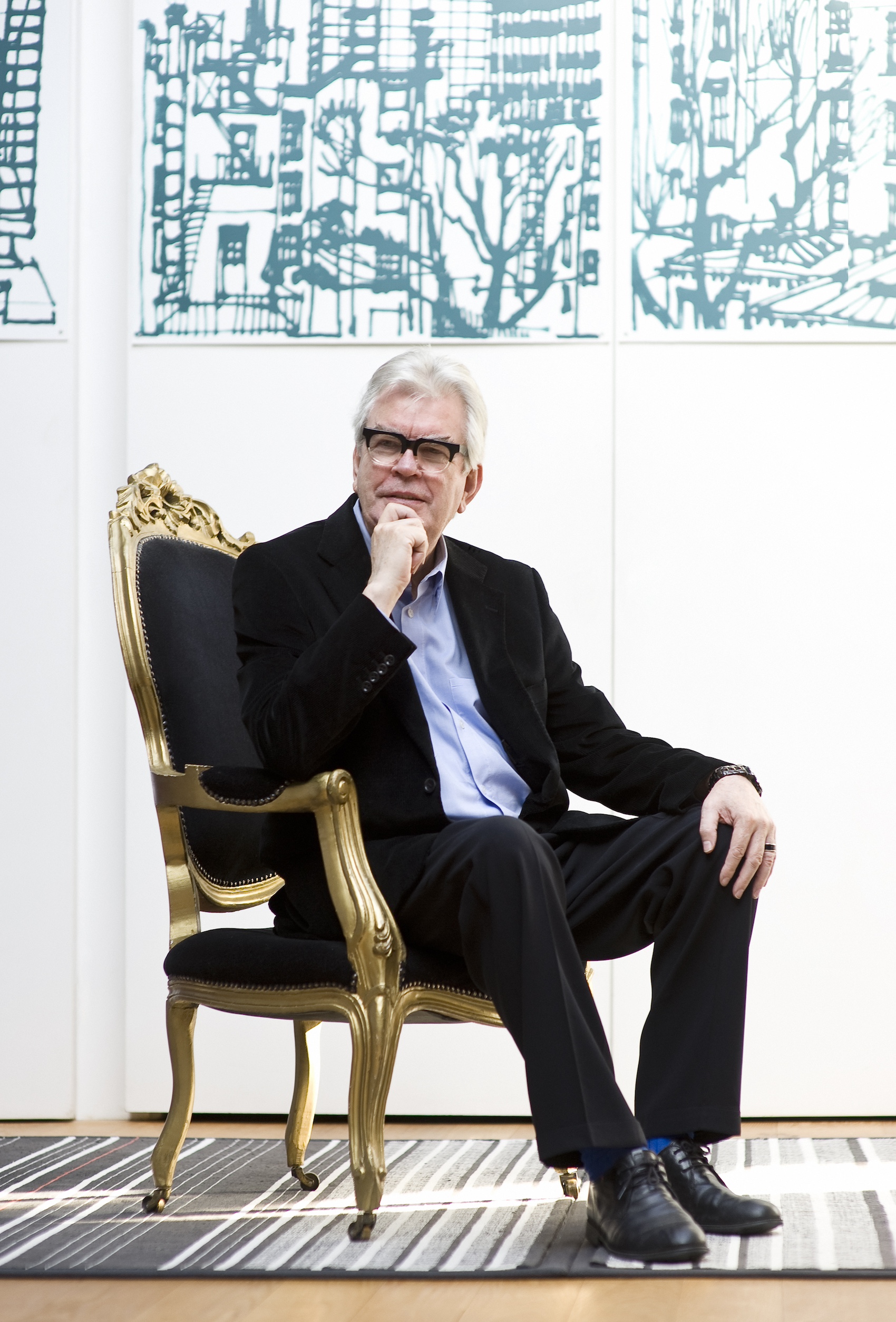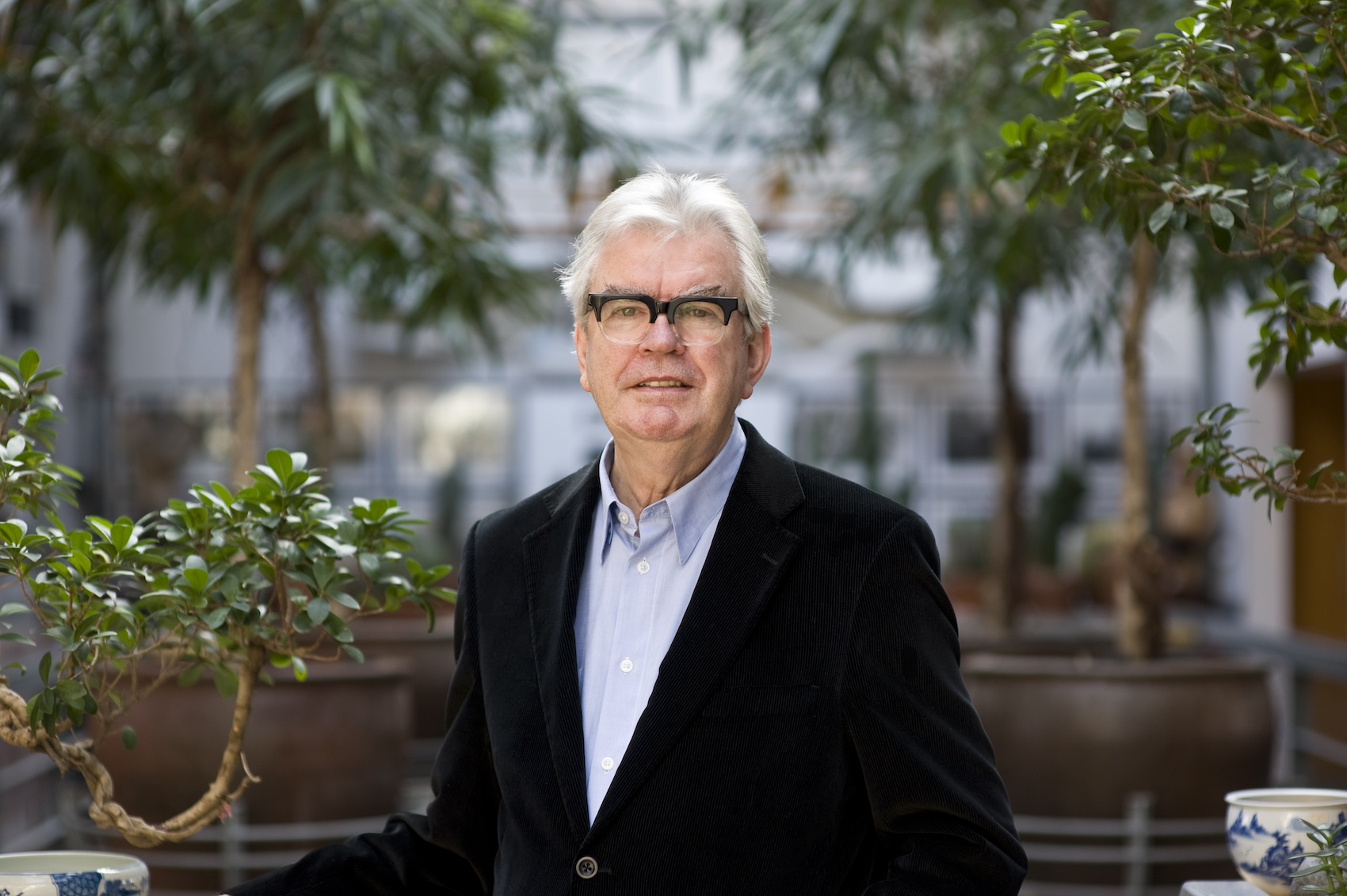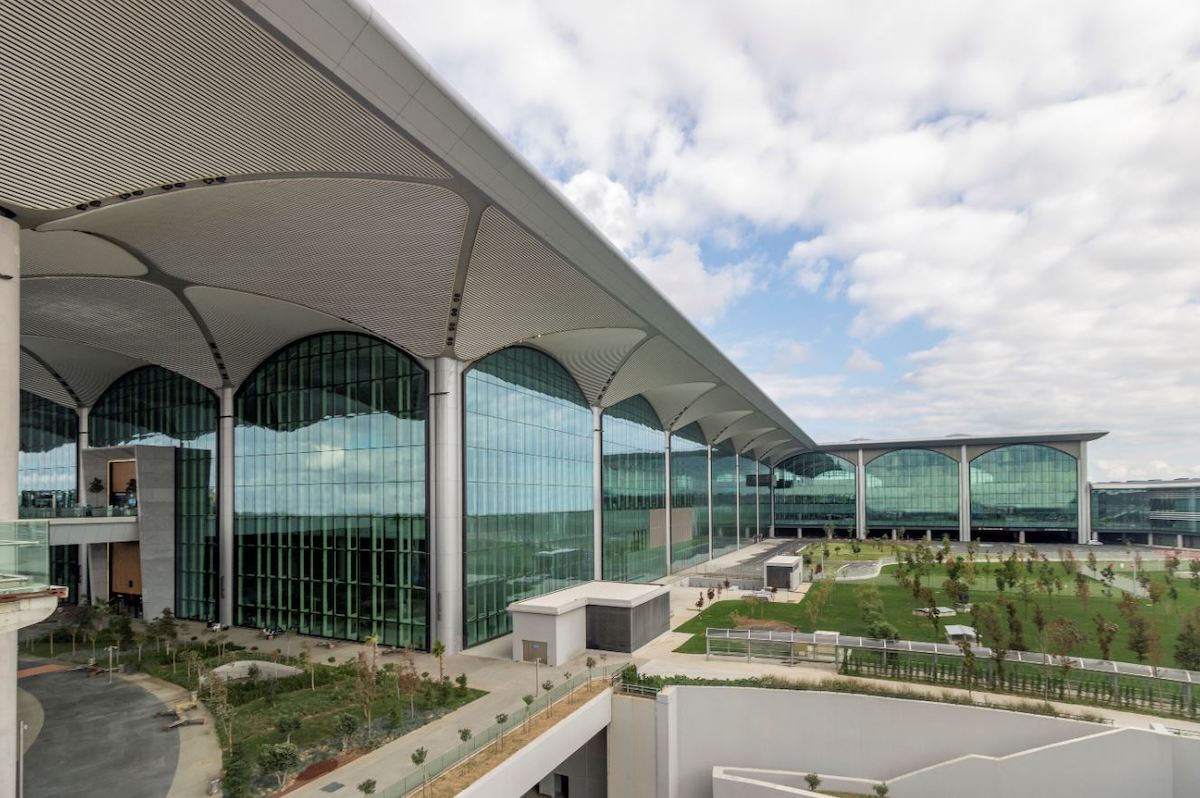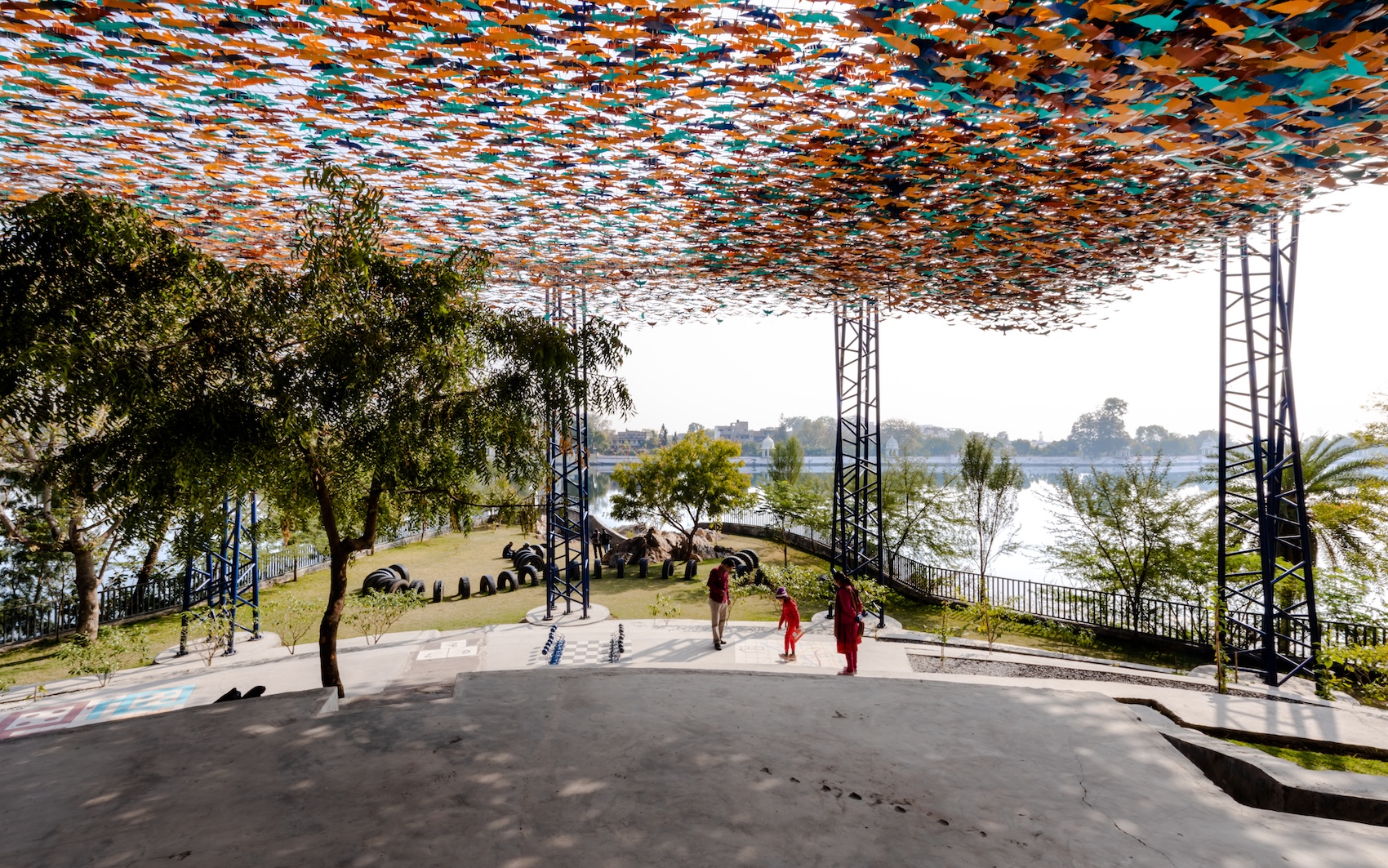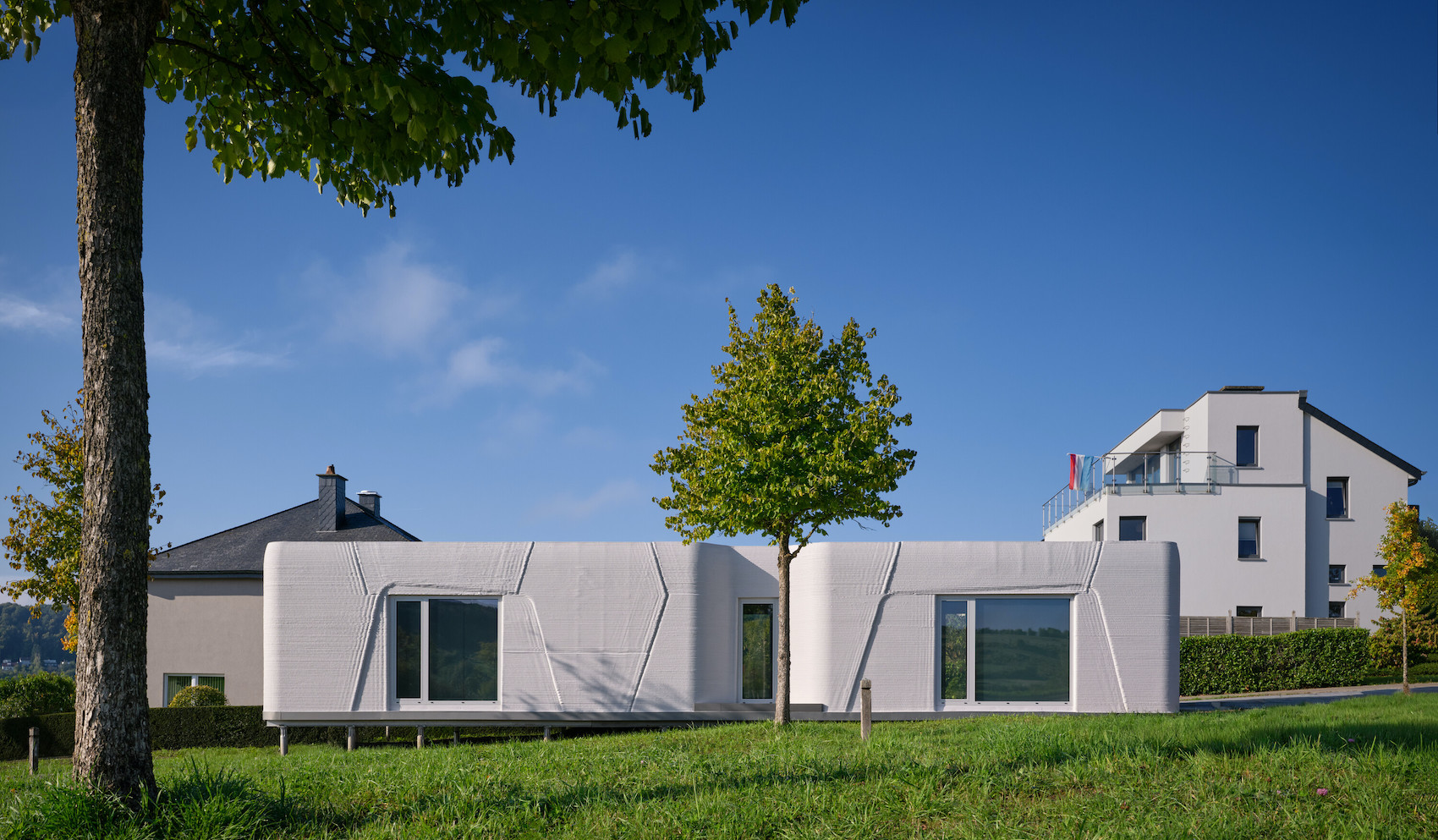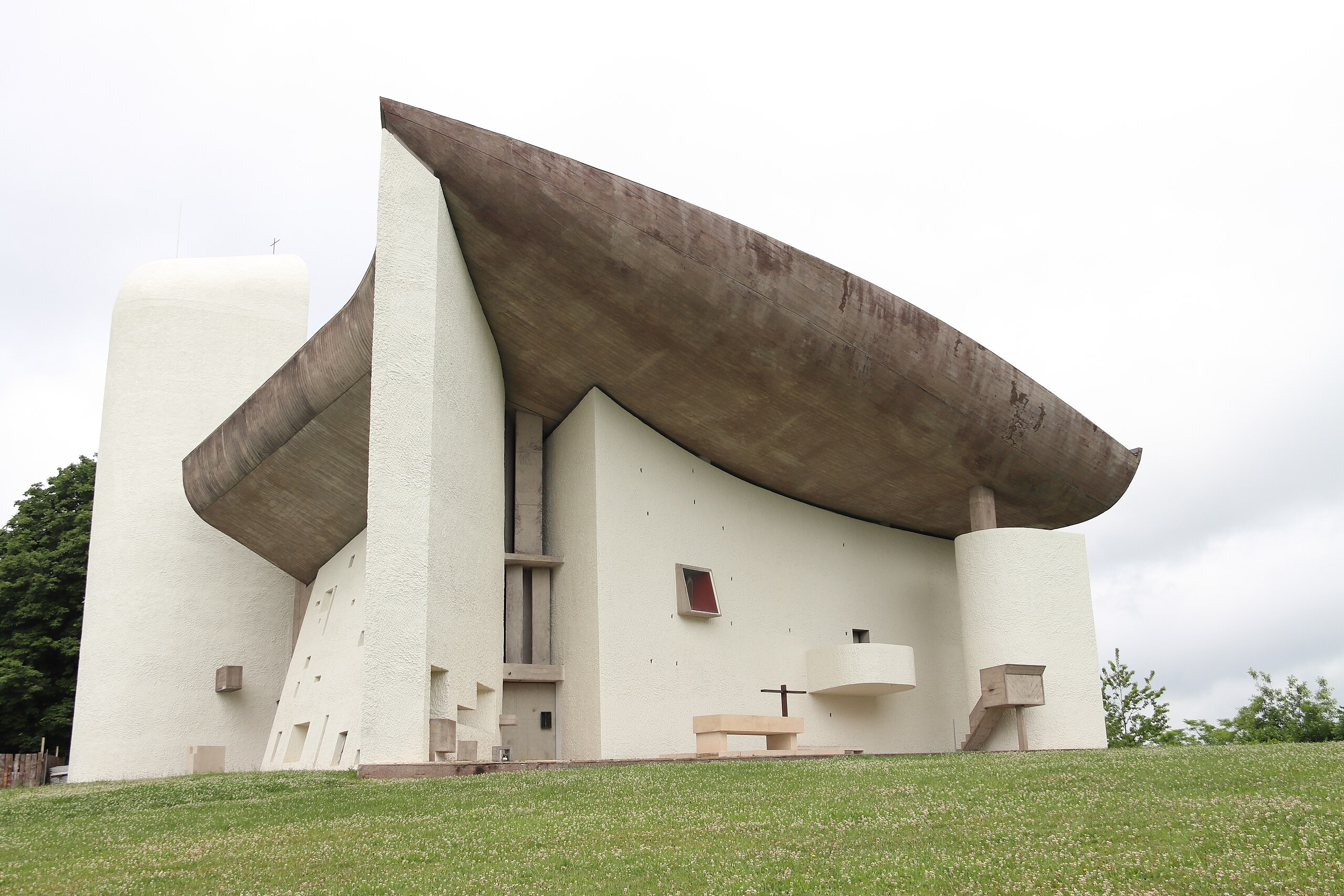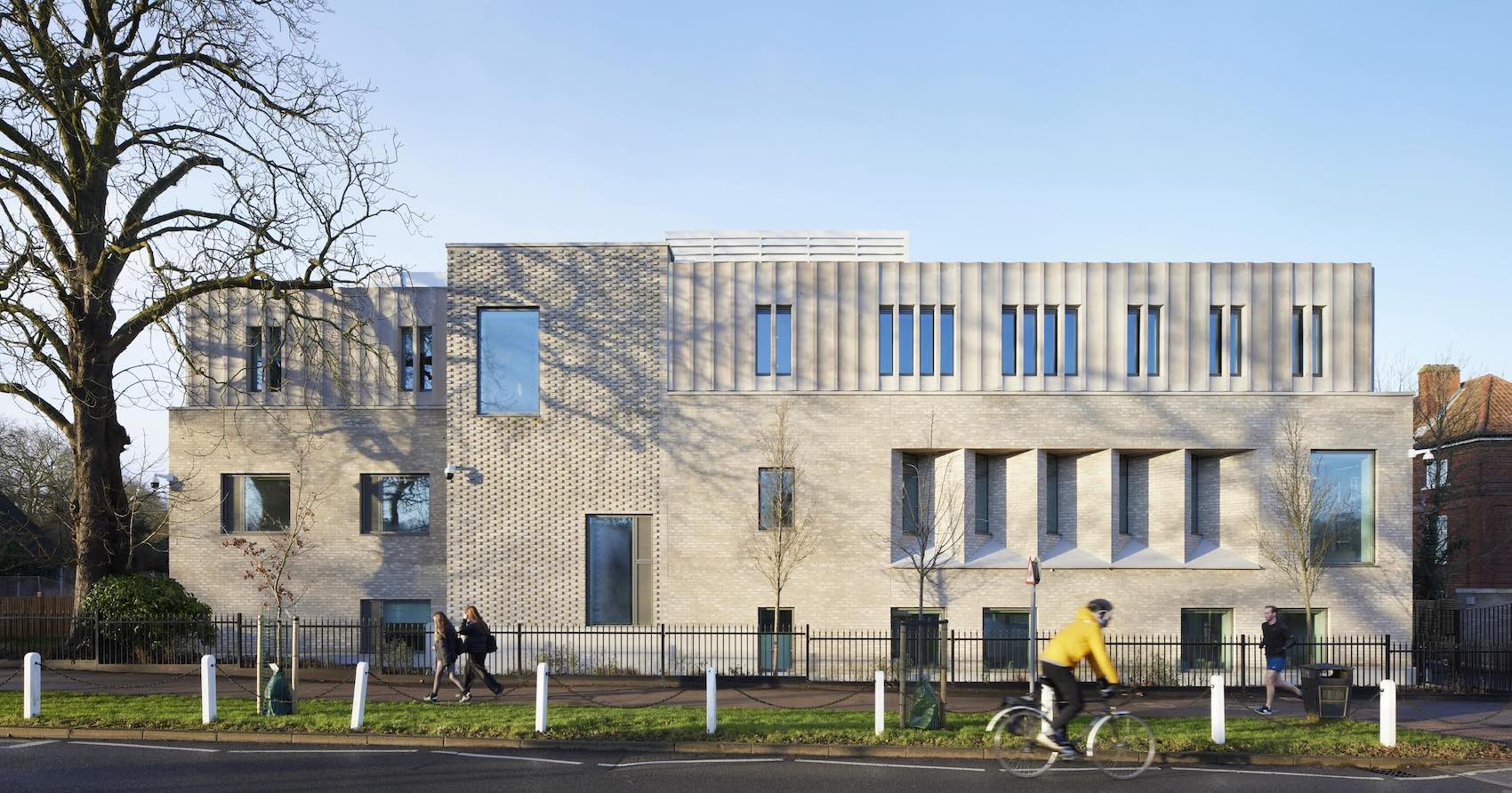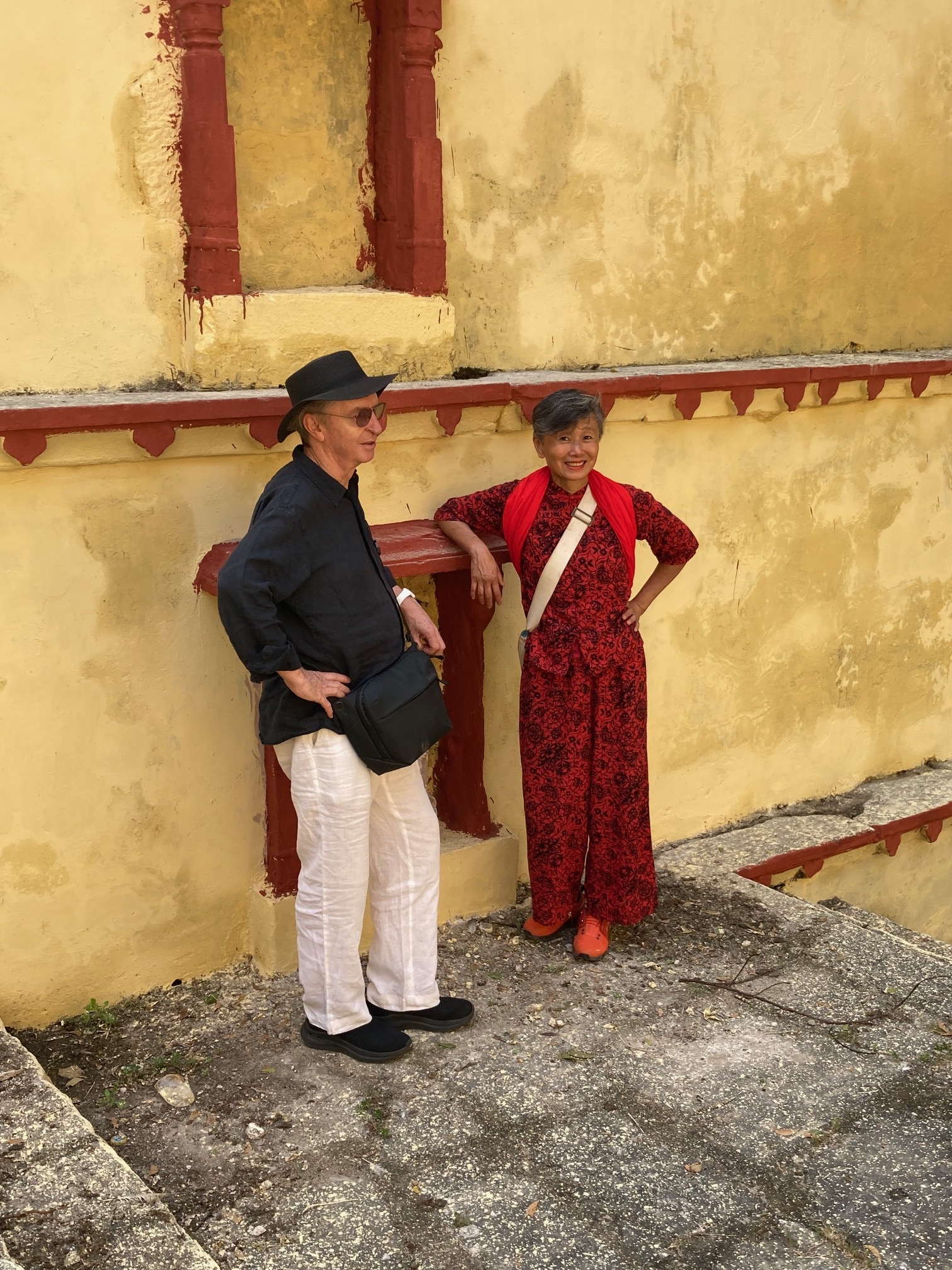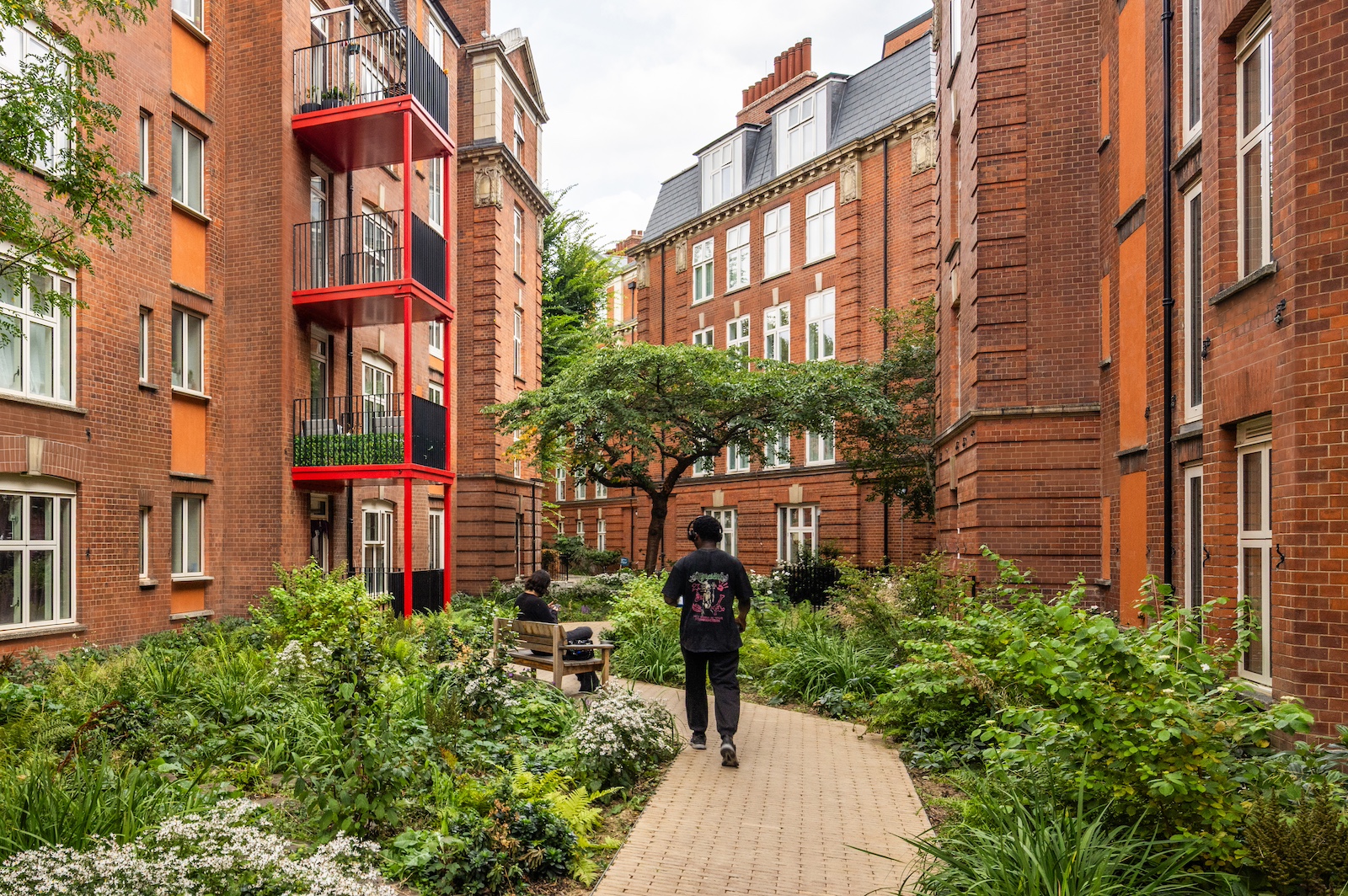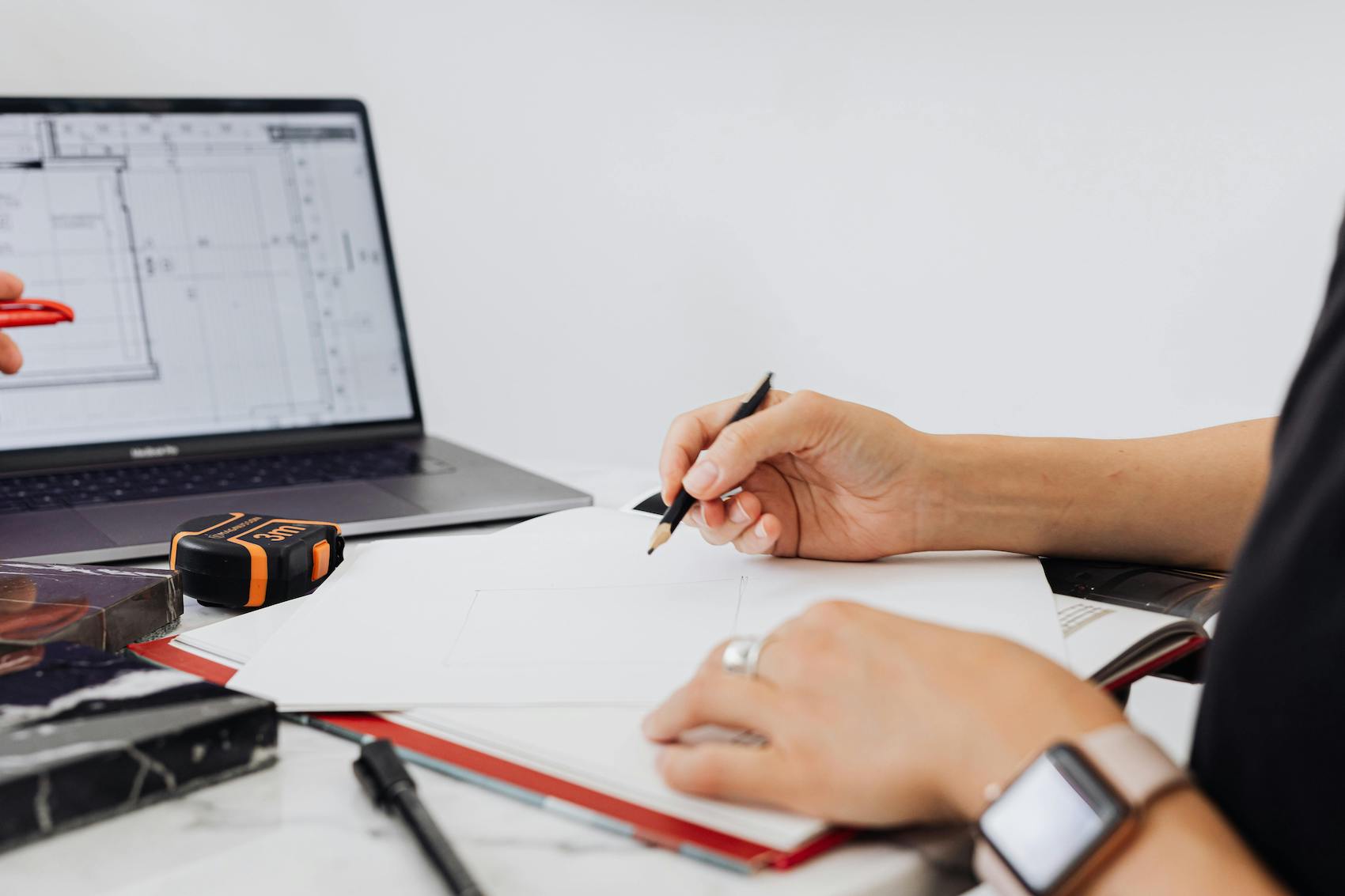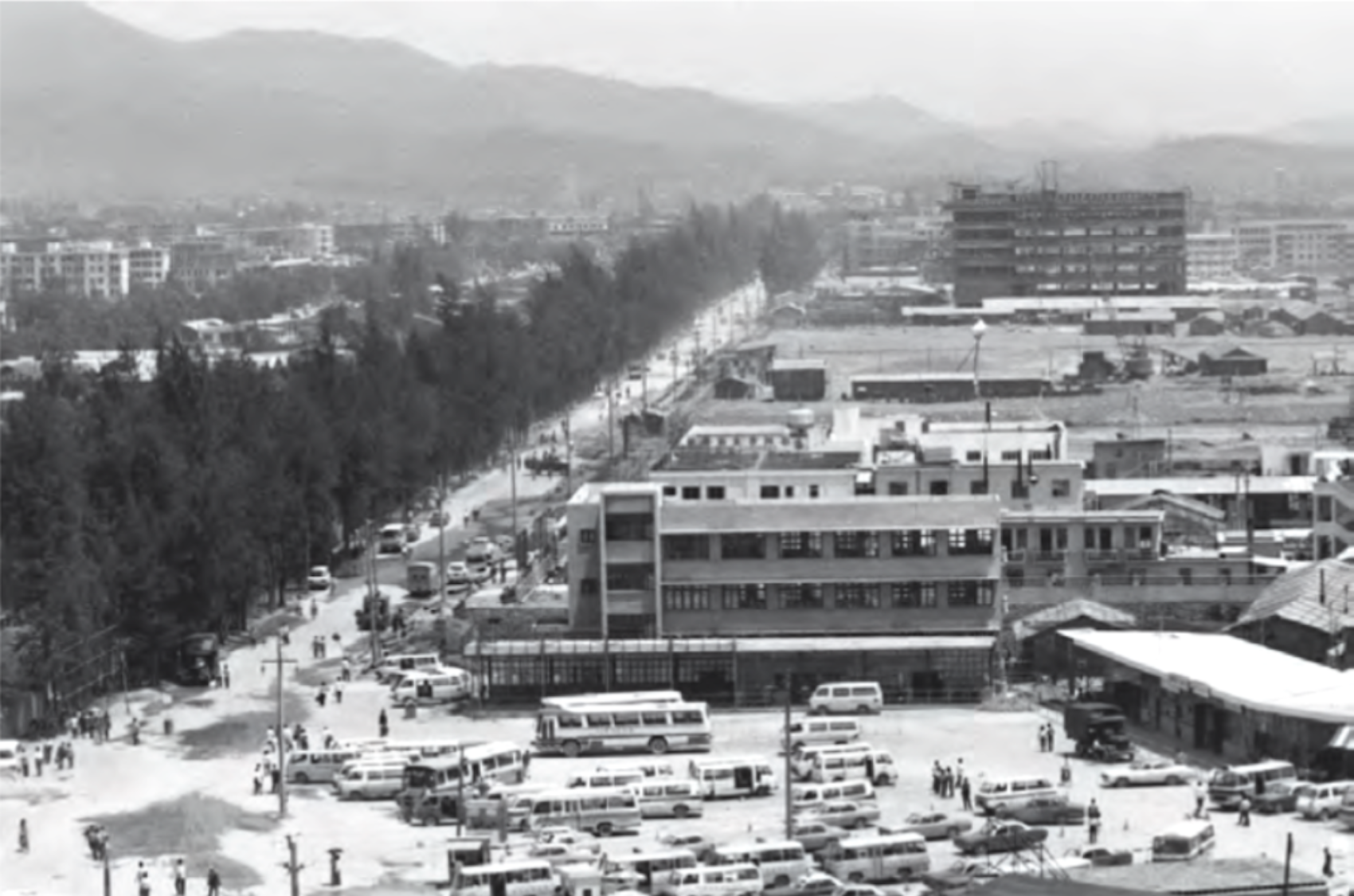Sir Terry Farrell’s son, Max, along with current and former senior staff at the practice Peter Barbalov, Stefan Krummeck and Nigel Bidwell look back on life with the late Terry Farrell, a “titan of design” and a man of “intellect, instinct, humility and heart.”
On 28 September 2025, Terry Farrell passed away aged 87. The architect behind the MI6 Building in Vauxhall, Beijing South Railway Station and the head offices of TV-am in Camden Town, among many other projects, initially formed a practice with Nicholas Grimshaw (who also very recently passed away) in 1965. He went on to found his own firm, Terry Farrell & Partners (later Farrells), in 1980.
His son, Max, who used to work at Farrells, along with Peter Barbalov, a partner at the firm, Stefan Krummeck, global director, and Nigel Bidwell, former partner and now at JTP, shared their reflections on working with Terry Farrell.
Max Farrell
I will always remember him as an incredible Dad full of warmth, humour, encouragement and love. He was also a pioneer of architecture and urban design, who reshaped the way we think about cities and the places we live in. I’m proud to be his son and to have worked alongside him for many years.
He always believed that buildings should have context and character, that they should speak to their surroundings and the people that use them. Long before it was fashionable, he understood architecture is about more than buildings. It’s about neighbourhoods, connections and communities.
My Dad was born on a council estate in Manchester, the son of Irish immigrants, before moving to Newcastle where he studied architecture. He won a scholarship to the University of Pennsylvania where his tutors were Louis Kahn and Bob Venturi, two of the most influential architects of the 20th Century who inspired his creative, human-centred approach.
That spirit carried into projects that are part of our national story now, from Charing Cross to MI6, TV-AM to the Home Office and The Deep to Newcastle Quayside. Internationally there were landmarks like Beijing South Station, Incheon Airport and KK100 – the tallest building in the world by a British architect. His first job was for London County Council where he designed the Blackwall Tunnel ventilation buildings (now listed) and a lifelong interest in London and the Thames. Lesser-known projects like Jencks Cosmic House, Henley Regatta and Comyn Ching Triangle (beginnings of the ‘retrofirst’ movement) were among my favourites. We were so lucky to grow up in houses that were explosions of colour and ‘maximalism’.
As his career progressed, he was awarded the OBE, CBE and a Knighthood from King Charles. Not bad for a working class lad from Newcastle! He was awarded the Royal Town Planning Institute Gold Medal, the highest honour in town planning, in recognition of his dedication to placemaking. The first architect to receive it since Abercrombie in 1955.
The recent opening of the Farrell Centre in Newcastle is a tribute to his belief in public debate, education and the role of communities in shaping cities. His proudest moment was being awarded the keys to that great city. He was always a Geordie at heart.
He also made an impact through his critical thinking, writing so many books I lost count. The Farrell Review, which I was fortunate enough to work with him on, left an enduring legacy. I’m often told by people from different generations and professions how much of an influence he was on them. For him, architecture was never just about form or function. It was always about people, place and purpose.
He leaves behind an amazing legacy. In buildings, ideas and the lives of everyone that knew him. I will remember him for his generosity of spirit, curiosity and ability to inspire people. But most of all for being a brilliant Dad.
Nigel Bidwell
I had the pleasure of working with Terry for almost 20 years and it was a unique education that took me from being a Part 2 student to a partner of the studio.
Terry was a titan of design as he remained at the leading edge of architecture and urban design throughout his extensive career by asking different questions and developing his thinking to address new challenges both internationally but also closer to home in the key cities of the UK.
His thinking around place was grounded in his fascination with how places grow over time and I thought he was always a very humane designer; spaces were always engaging and public focussed while his buildings were welcoming and inspired delight and surprise.
People described him as a maximalist and to me this was about exploring the opportunity for design to its fullest. There was a pragmatism and strong logic to all his designs but the practice’s most memorable projects have the Farrell ‘signature’ that allows you to sketch an impression of them with your eyes closed. His rigorous design process and his depth of knowledge meant that it was pleasure to just listen to him expand on his philosophy of design. His presentational style was, I would describe, like a ‘fireside chat’ and I saw many clients similarly fall under his spell.
Terry had an adage for every situation. One of his favourites was a sergeant major inspecting his troops. When he spotted one with a black eye, he blackened the eyes of all the remaining troops to make them match. Terry laughed at the perverseness of this because he always celebrated variety and the organic creation of places. His philosophy put him at odds with others and I remember a meeting on the Earls Court project looking at a design for a new square, with the late Michael Squires, advocating the consistent height of buildings around it whilst Terry pointed to St James Square with its distinctive plot-driven silhouette.
Terry loved working with younger members of the office. He could be quite intimidating to those that didn’t know him so it was seen by some as a ‘rite of passage’ but he was incredibly generous with his time and would sit and draw with new students, expanding on his views and patiently exploring options. I have fond memories of my ‘initiation’ working with him on the Dean Centre in Edinburgh and the fun we had designing a table that expanded to support a huge statue by Eduardo Paolozzi and briefing carpenters to add Rams feet to the legs of chairs. His interest in design wasn’t bound by the traditional definition of architecture and this made for an incredibly vibrant studio and one that offered a new experience every day.
I was always struck by his sheer force of personality — and he was never beaten, being solely focussed on championing design. We worked on Chelsea Waterfront for more than 15 years and he never lost his passion for the site and continued to bring new ideas to the project. He was incredibly industrious and it was a regular occurrence that his trusted and long-time PA, Maggie would pass a sketch to you first thing on Monday morning, following Terry’s musings over the weekend. The joke in the studio would be that its recipient would spend the next 15 minutes working out whether it was a plan or section and continue to turn it 90 degrees but the reality of it would be that Terry had hit the nail on the head with his insight and that a particular aspect of the design or its advocacy would be unlocked.
Terry’s life was interwoven with what he loved to do. He lived ‘above the shop’ on Hatton Street and his fantastic studio was layered with models and drawings and became a base for discussions about projects and entertaining clients. You would often receive a call from ‘upstairs’ and you would take roll of drawings up the fire escape for his review where he would be sat in his kitchen with his ever-present enthusiasm that defined him. He will be missed.
Peter Barbalov
It feels somewhat early to share thoughts on Terry. However, after working with him since 1999 what stands out for me is how he excelled at bringing the best from the people around him — from clients and consultants to the team here at Farrells and the ease and confidence he communicated his ideas.
Guided by his vision, his attention to detail and his never-ending inquisitiveness our design process was founded from the beginning on finding innovative, outside the red line solutions which gave best value and outcome for the project – “Bangs for Bucks,” he used to say. Terry was a maximalist – one of his favourite observations was that we as architect a too serious and obsessed with how buildings are made rather than what they do.
He had the skill of being able to summarise his ideas with simple, spidery sketches as he used hand drawing as a process of clarification and refinement. He used to draw them on scraps of paper, napkins, and envelopes and in the early days they would be faxed to us from his flat. He used a Pentel sign pen for this. He had started using them when he spent his formative years in USA — we have boxes of them here; they are what we call ‘standard issue’. In later years he created artworks using the same pen.
Stefan Krummeck
Two Moments with Sir Terry Farrell:
In 2006, not long after his separation, Sir Terry came to visit my wife, my children, and me at our home in Hong Kong. It was a warm, spontaneous afternoon. He sketched a Porsche for the kids, chatted easily with my wife, and embraced the rhythm of our family life. That evening, we brought him — on a whim — to a Thai wedding party. He dove into it with curiosity and joy.
Months later, when we met again, he had married his dear wife Mei Xin. He told me that the experience of visiting our home — feeling welcomed, connected, and at ease — had given him the confidence to commit to marrying an Asian wife as well. I was deeply moved. It’s rare to know you’ve played a part, however small, in someone’s journey toward love.
Years later, in 2017, we shared a panel at the Asia Society Hong Kong Centre, shortly after he received the RTPI Gold Medal. The room was packed — 300 people, including government officials and urbanists. When the discussion turned to Hong Kong’s country parks and the housing crisis, Sir Terry turned to me and said, “I think Stefan might have something to say on this.” Just like that, I was in the spotlight — caught between my personal convictions and the diplomatic tightrope of the moment. It wasn’t my finest performance, but it was unforgettable. Terry didn’t need to pass the mic, but he did. That gesture spoke volumes about his generosity and his belief in dialogue.
These two moments — one private, one public — capture the essence of Sir Terry for me. A man of intellect, instinct, humility and heart, I’ll always feel grateful to have shared those spaces with him.


